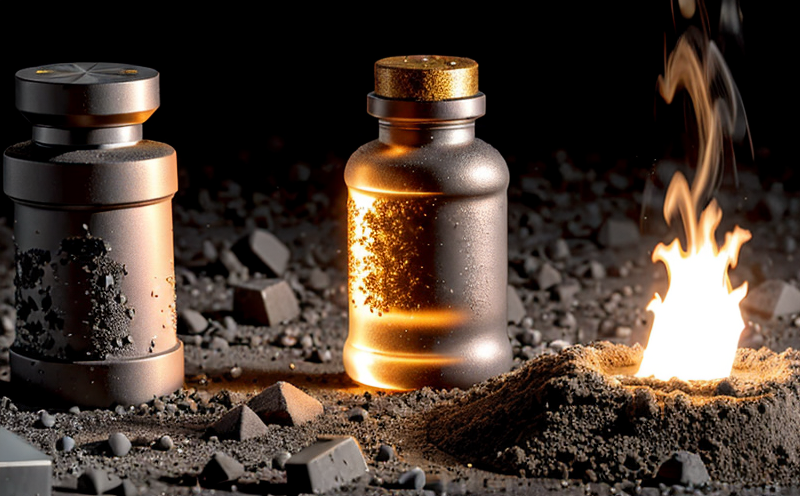ASTM C1211 Creep Testing of Irradiated Nuclear Ceramics
The ASTM C1211 creep testing procedure is a critical method used in the characterization and evaluation of the mechanical behavior of irradiated nuclear ceramics. This service plays a pivotal role in ensuring the integrity, reliability, and safety of materials destined for use in nuclear reactor environments. Creep testing under high-temperature conditions helps predict long-term performance by assessing how these materials deform over time when subjected to sustained stress.
The ASTM C1211 procedure is particularly relevant for ceramic materials that are exposed to radiation during their service life within a nuclear reactor core. These ceramics, often made of oxides or carbides, must maintain their structural integrity and mechanical properties despite the harsh conditions. This testing ensures compliance with stringent standards such as ISO 5834, ASTM C1211, and ASME Section III, which are critical for the design and safety certification of nuclear reactor components.
The testing process involves subjecting a small cylindrical specimen to both temperature and stress to induce creep deformation. The test is conducted at elevated temperatures, typically between 300°C and 750°C, over periods ranging from days to weeks or even months. This extended duration allows for the accurate measurement of strain rates under stress, which are then used to calculate creep properties like stress-temperature relationships and relaxation.
Before testing, specimens undergo rigorous preparation, including mechanical polishing to a fine finish, ensuring that any surface imperfections do not affect the test results. The specimen is mounted in a gage section with two parallel planes along its length, facilitating accurate measurement of strain using extensometers attached at both ends.
During testing, temperature and stress are controlled precisely, often using sophisticated furnaces capable of maintaining high accuracy within ±1°C of the set point. Strain is measured continuously through the extensometer, providing real-time data on how the specimen deforms over time. This data is then analyzed to determine key creep parameters such as primary creep rate, secondary creep rate, and relaxation behavior.
The results of this testing are crucial for several reasons. First, they provide insights into the long-term mechanical stability of nuclear ceramics under irradiation conditions. Second, these tests help in optimizing material selection for future reactor applications by highlighting which materials can withstand prolonged exposure to high temperatures and stress without significant degradation.
For quality managers and compliance officers, this testing ensures that suppliers meet stringent regulatory requirements, thereby reducing the risk of component failure during operation. R&D engineers benefit from detailed creep data, which informs design modifications aimed at improving material performance. Procurement teams can use these results to make informed decisions about purchasing materials that are proven to perform reliably under irradiation conditions.
Industry Applications
| Application | Description |
|---|---|
| Nuclear Reactor Core Components | Testing materials like zirconium carbide and silicon nitride to ensure they maintain structural integrity over long periods of use. |
| Thermal Barrier Coatings | Evaluating the durability of coatings used in nuclear environments, ensuring they can withstand high temperatures without delamination or cracking. |
| Fuel Cladding Materials | Assessing the performance of cladding materials to prevent degradation and potential fuel leakage during reactor operation. |
| Heat Exchanger Components | Evaluating the mechanical properties of heat exchangers, which are critical for efficient heat transfer in nuclear reactors. |
Customer Impact and Satisfaction
- Improved Safety: Ensuring that materials used in nuclear applications are reliable and safe, reducing the risk of accidents.
- Compliance with Standards: Meeting international standards such as ASTM C1211 and ASME Section III to avoid legal penalties and ensure regulatory compliance.
- Informed Decision-Making: Providing detailed data that helps engineers make informed decisions about material selection and design improvements.
- Cost Efficiency: By identifying materials that can withstand harsh conditions, this testing reduces the need for frequent replacements or repairs, leading to cost savings in the long run.





